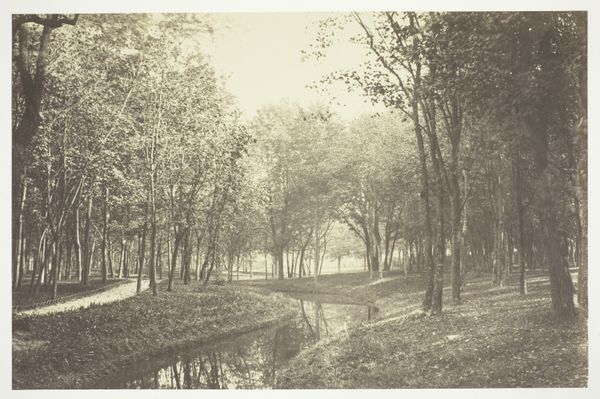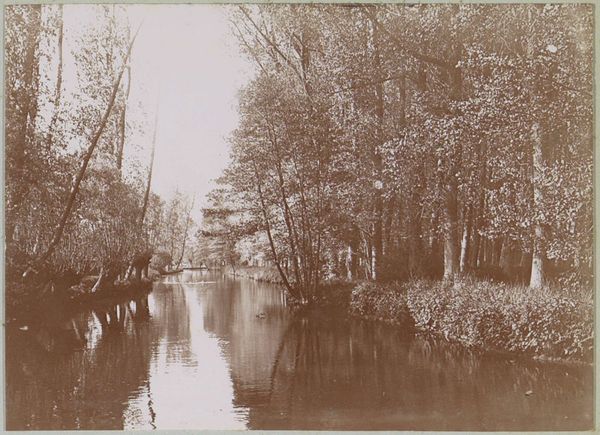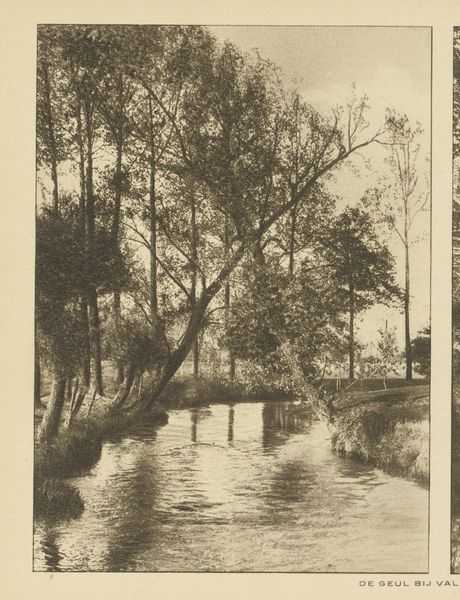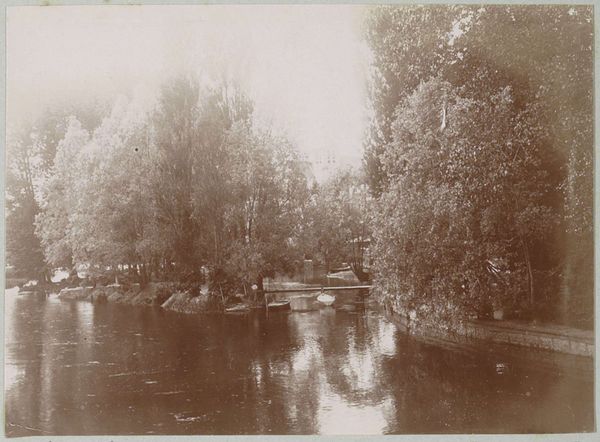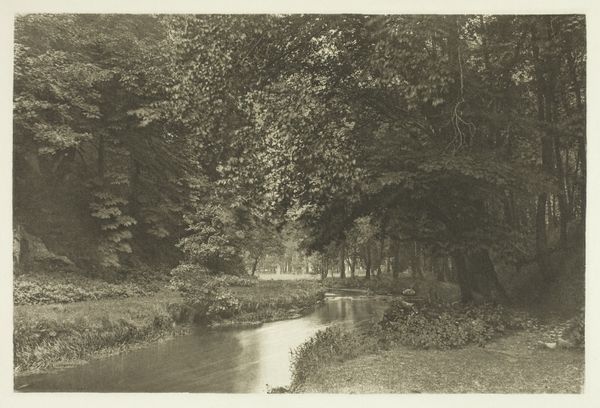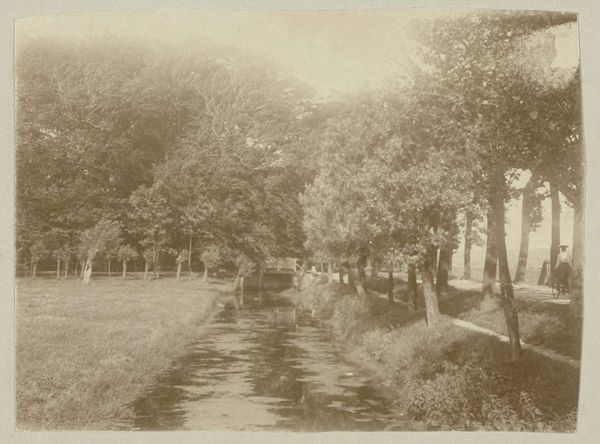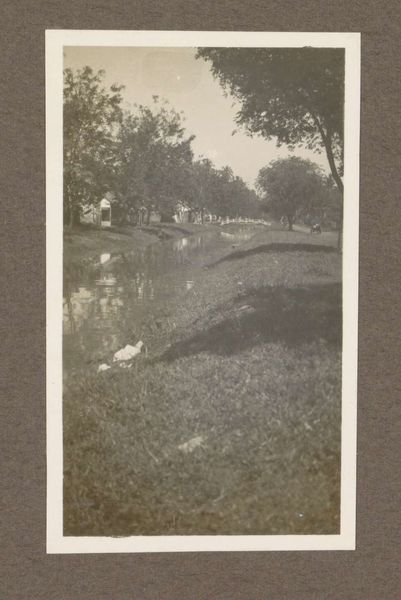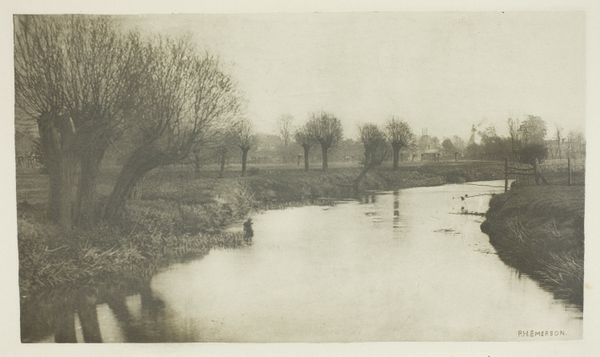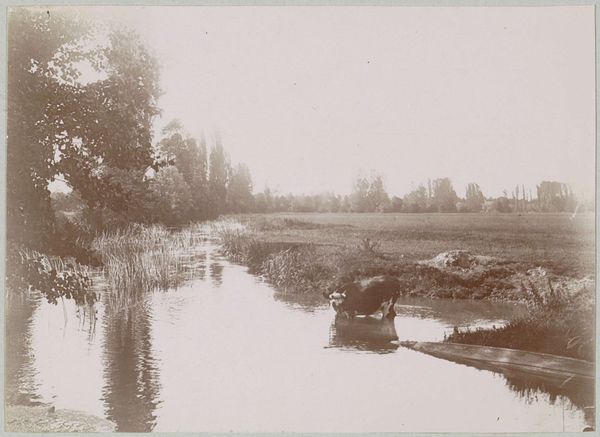
Dimensions: height 223 mm, width 171 mm
Copyright: Rijks Museum: Open Domain
Curator: This gelatin-silver print, titled "Twee arbeiders aan het werk in een beekje," which translates to "Two workers working in a brook," comes to us from the lens of Richard Tepe, sometime between 1900 and 1930. It's currently held in the Rijksmuseum's collection. What's your initial take on it? Editor: Hmm, serene. But there's an undeniable melancholy to this sepia-toned scene. The light is beautifully diffused, making the everyday act of these laborers feel both timeless and fleeting. It almost looks like a staged photograph, if you ask me. Curator: That's a perceptive point. Tepe’s work often dances on the line between realism and something almost dreamlike. He was working during a fascinating time when photography was becoming more accessible but was also trying to establish itself as more than just a documentary tool. Realism blends into Impressionism. Editor: So, these figures, they become almost symbolic. Perhaps standing for human endeavor or some essential labor. What strikes me too, is the near perfect central vanishing point on the photograph, leading your eyes along the brook. Curator: Absolutely, you have to remember, landscape was still the hero of many photographs around the time. So including this symbolic labor perhaps serves to sanctify the earth. Editor: I see what you mean, there’s something biblical almost… laboring in the promised land. So the water’s reflections almost become spiritual emblems? Or is that reading too much into it? Curator: Not at all. Water often symbolizes cleansing, renewal. And the slight blurring effect – almost like a soft-focus lens – it heightens the sense of this scene existing outside the realm of ordinary time. Consider that the impressionist movement began in the previous decades, imbuing almost any representation of landscape, urban or rural with these feelings and symbolic readings. Editor: Which could be read now as glorifying back-breaking, physical labor in a really… well, maybe not such an appropriate way now, knowing what we know? Curator: Indeed. Looking at historical images through a contemporary lens can always spark discomforting, but valuable, dialogue. What's "truthful" to Tepe might carry vastly different connotations for us today. That discomfort is itself a sign of progress, isn’t it? Editor: I think so. Thanks, that’s really altered the way I initially saw this artwork! Curator: The pleasure was all mine. Thanks for engaging with Tepe’s captivating photograph with me.
Comments
No comments
Be the first to comment and join the conversation on the ultimate creative platform.
